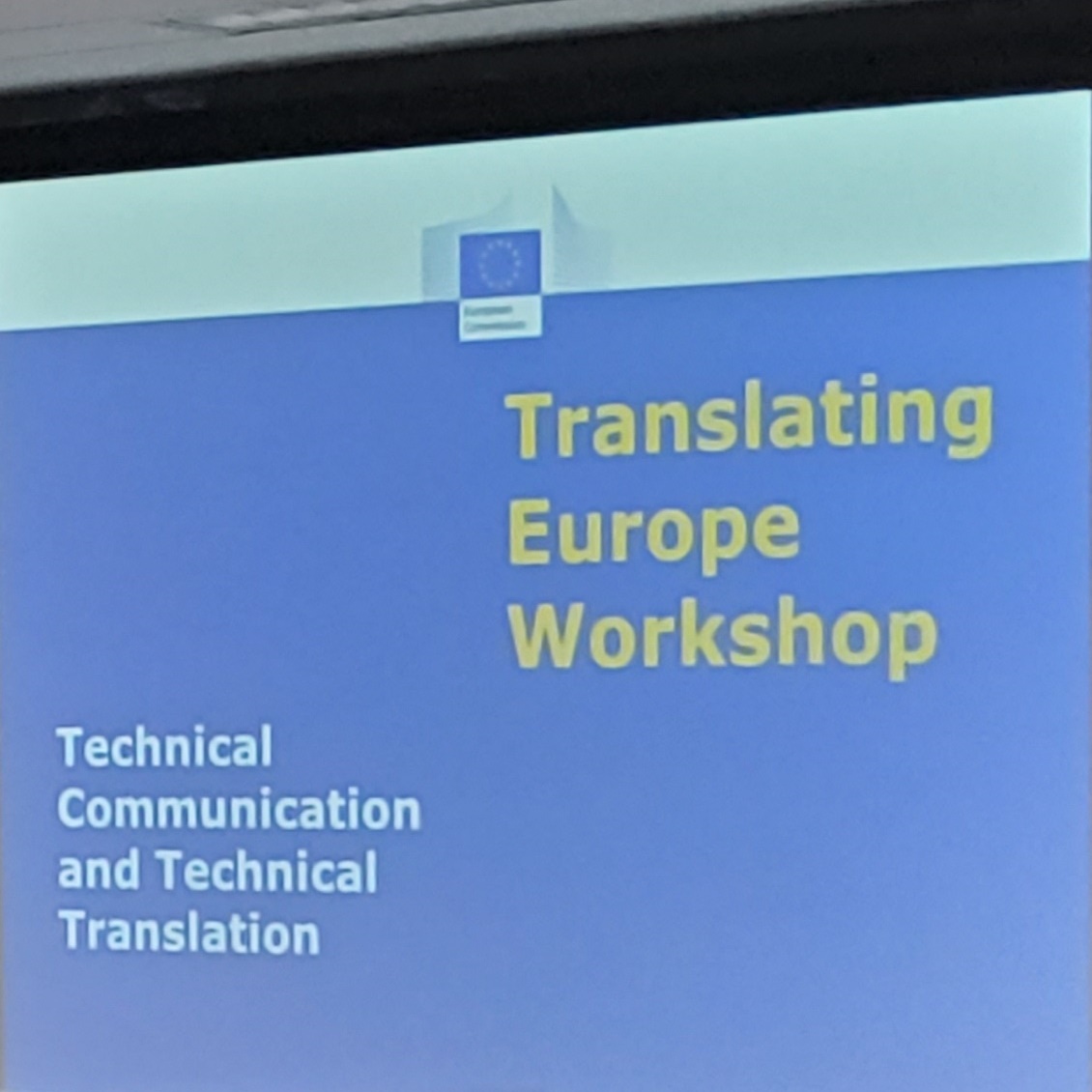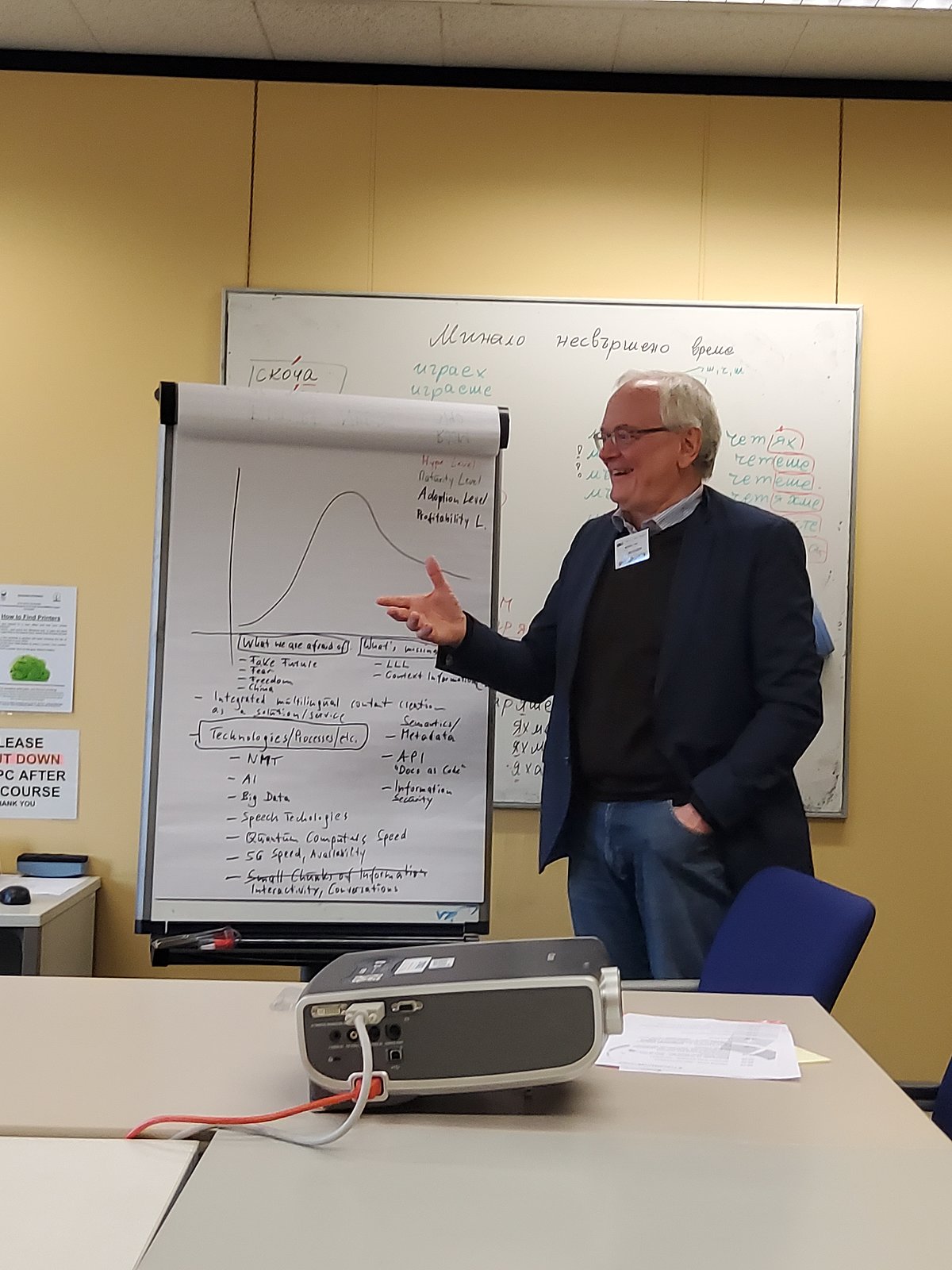12/12/19

Technical Communication and Technical Translation - Two Sides of the Same Coin?
The European Commission's Directorate-General for Translation (DGT) organized a Translating Europe Workshop on the subject.
They are all working towards the same goal: technical writers and technical translators want to bring information on a technical product to the market for users. Their tasks are different and so is their technical background – but aren't they just two sides of the same coin?
The aim of the Translating Europe Workshop, which took place on December 3 in Brussels, was to discuss this and draw up an action plan for cooperation and better training. Representatives from academic teaching in translation, the translation industry and technical communication met to focus on the new challenges facing technical translation.
It was quickly agreed that technical writers and technical translators have many overlapping function and skills, and that technical translation has much more in common with technical communication than with other areas of translation. But specialization and the construction of departmental silos make it difficult to feel like a team working on the same process with the same goal. The focus is on one's own actions; the view beyond one's own nose is distorted.
A common goal image and a common ground, as well as communication and cooperation, are needed. The way there is through mutual understanding. The basis for this is shared knowledge and overlapping competencies – this was the interim conclusion. One of the three breakout groups then dealt specifically with the skills of technical translators in the workshop. Participants discussed what makes a technical translator special compared to translators in other fields.
The two workflows play an important role: it is essential to know how the documentation process works and what effects it has on the translation workflow. The work of the technical writer precedes that of the technical translator.
Technical translators often work in areas where agile development takes place. This means that they receive many changes and the translation often contains only chunks and small text segments. Also, the context for the translation is often missing.
Technical translators work with special types of text, such as user help in software programs or instructions for use. The content types are also special, e.g. step-by-step instructions or safety instructions. The content to be translated often contains meta information, usually identified by semantic languages such as XML. Technical translators must also take this hidden information, such as meta tags, into account when translating.

For technical translators, terminology management and term consistency are of particular importance. In addition, they must be familiar with the specific terms used in the field.
Many tools are used in technical translation: In particular, technical translators work with computer-aided translation and machine translation. They therefore have special tasks in the field of post-editing. Translation memory systems also play a special role in technical communication.
Technical translators must be competent in research, e.g. in order to acquire subject- or product-specific knowledge, to research applicable guidelines or, for example, to obtain information on terminology.
Many tasks in the field of technical translation involve both translation management and project management in general. Technical translators work in all areas in which technical products are manufactured, such as software, mechanical engineering or consumer goods.
They should therefore also have industry-specific knowledge and technological skills. In summary, technical translators have much in common with technical writers, both in terms of skills and processes, far more than translators working in other fields. There is a lot in common here. The tasks of training and teaching are to make trainees "Fit for Purpose" and to impart shared knowledge about both areas. Communication and cooperation between technical translators and technical writers are essential for the common goal: the creation of international technical communication.

“Technical Translator Competences”
Summary of the breakout group
Expectations of the group members
- Competences for technical translators in training
- Align EMT competences with TecCOMFrame, dedicated to tech writing
- Hear the “other” side, i.e. other translation domains: what we’re missing, where we match
- End-user information
- Improve teaching
- Formulate clear competences
- Translate the competences into training
- Validate personal competences against the current state of affairs
- Validate TecCOMFrame competences
- What do academics think of this?
How was the current technical translation module (at university of Antwerp) created?
- Based on the EMT framework + personal experience
- Feedback by alumni and professionals
- E.g. added a writing course and made modules compulsory
What makes a technical translator special?
The first breakout group dealt with the subject of technical translator competences. The working group asked: “What makes technical translators special”? Starting with the activities of a technical translator, there were – with respect to translators working in other fields – differences in various areas:
- Processes: The two workflows play an important role here: how the documentation workflow works, and what the impact on the translation workflow is. Technical translators often work in areas where agile development takes place. This means that they receive a lot of changes and the translation often only includes chunks and small text segments. The context for translation is often missing.
- Content: Technical translators work with special content, such as user assistance and documentation for use. The text types are also different; for example, instructions or safety messages. The content itself contains meta information and is often marked up with semantic languages such as XML. Find hidden information: meta tags, XML.
- Terminology. For technical translators, the management of terminology and adherence to term consistency are of particular importance. In addition, they must be familiar with the terms specific to the subject area.
- Tools: Technical translators in particular work with computer-aided translation and machine translation. Therefore, they have special tasks in the area of post-editing. Translation memory systems also play a special role here.
- Research: Technical translators must be competent in research, e.g. to acquire subject-specific or product-specific knowledge, to research applicable guidelines, or to inform themselves about the formation of terms.
- Management: Many tasks in the field of technical translation concern translation management as well as project management in general.
- Industries: Technical translators work in all areas where technical products are produced, such as software, mechanical engineering or consumer goods. They should therefore also have sector-specific knowledge and technological skills.
- Quality: Terminology management: both implementing existing company terminology and coining new, appropriate terminology. Consistency.
In summary, both in terms of skills and processes, technical translators have much in common with technical writers, far more than with translators working in other fields. There is great common ground here. With respect to skills and training, it is important to be “Fit for Purpose” with respect to:
- Instructions
- Labels
- Consistency with previous translation
- User experience in target language
